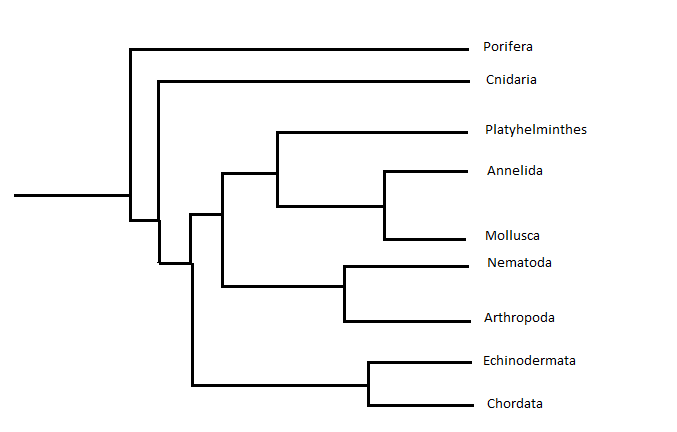Classification
Domain- Eukarya: Cells contain a bound nucleus
Kingdom- Animalia: Multicellular eukaryotic organisms
Phylum-Chordata: deuterostomes (anus formed before the mouth)
Class-Ostheichthyes: bony fish
Order-Beryciformes: fish that have ray-like fins
Family-Anomalopidae: flashlight fish that have a light producing
organ
For a brief overview of Anomalopidae visit
Discover Life.
Genus-Kryptophanaron:
fish that have light organ under their eye that can be
shielded
Species-Kryptophanaron alfredi
Common Name: Atlantic Flashlight Fish
This tree gives the order Beryciformes and
family Anomalopidae of K. alfredi. It breaks down
the family into the three main geneses: Anomalops,
Photoblepharon and Kryptophanaron. The tree is based on
morphological data to distinguish between genus and species.
The Kryptophanaron alfredi is most closely related to the
Kryptophanaron harveyi. They are the most closely related,
both having a light organ located under the eye that can be
shielded by a shutter like structure (Baldwin and Johnson 1995).

Figure 1. Phylogenetic tree
of Anomalopidae family (Herrish 1982 and Wolfe and
Haygood 1991.) Modified by Kara Greenwood 2013.
The K. alfredi can
be grouped in the phylum Chordata
because it has a dorsal nerve cord and vertebrae. Another
organism that is classified as a Chordate is the
California Meadow Vole (Microtus
californicus).
According to this tree, chordates share their most
recent common ancestor with the phylum Echinodermata.
This is because they are both deuterostomes, meaning
their anus forms first. The phylogenetic tree
below is based on morphological data between each
phylum.

Figure 1. Phylogenetic tree of
animal phylum. (Modified from Gerrish 2013.)
Want to keep reading? Visit our
habitat page.
Return to home.